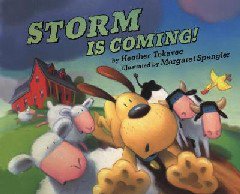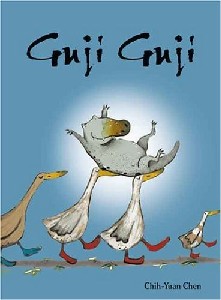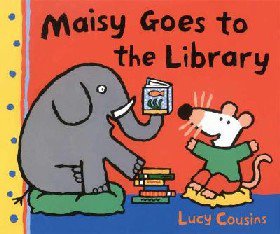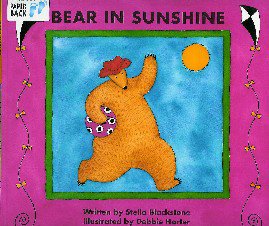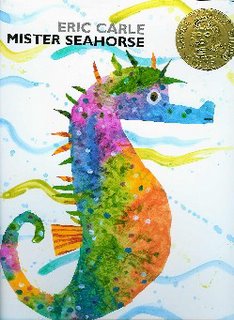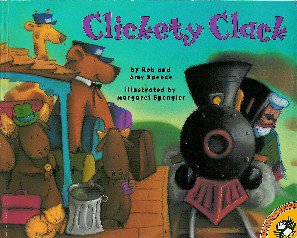The Yellow Balloon by Charlotte Dematons
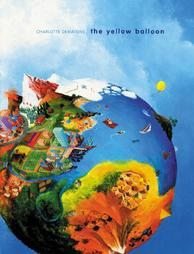
The Yellow Balloon
by Charlotte Dematons
Ages: 5+
Topics: Geography, history, geology
This wordless picture book follows a yellow balloon as it drifts through dramatic and diverse landscapes including cities, jungles, mountain ranges, agricultural lands, deserts, seascapes, airspace and the icy poles. In the tradition of the I Spy books, the game is to search for the yellow balloon in each double-paged landscape, while noticing the myriad of clever and imaginative details. The landscapes include both realistic and imaginative elements (witches on brooms, Santa and his reindeer, Mary Poppins, flying carpets) and combine scenes from different time periods and different continents together. In the agricultural scene, there's modern farming with motorized equipment and an English riding school next to a medieval castle with men in armour fighting with swords and a scene of American Indians on horseback with teepee villages.
This book is completely absorbing and will be enjoyed by adults as well as children. The ariel-view painted landscapes are rich and full of action, and searching through the details is irresistible. While no set story is offered, the book does track from day to night. There's a nice balance of the cheeky, day-to-day, and less happy details of human life (the storybook characters, the painter in his studio, the logging scene at the edge of the jungle). This wonderful book provides an ideal stepping off point to talking with children about art, history, geography, and different cultures, while spotting and sharing more familiar details.
Charlotte Dematons is Dutch and is the author of Let's Go! (which takes a similar approach following a young boy on an errand), Worry Bear and Looking for Cinderella.




